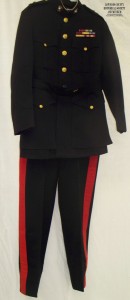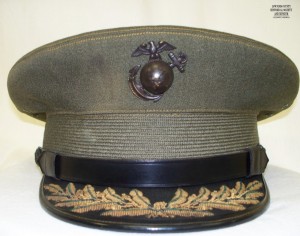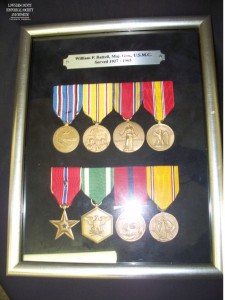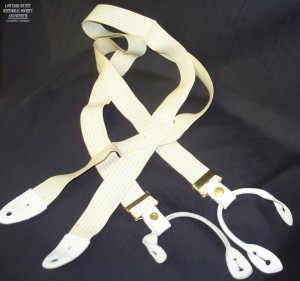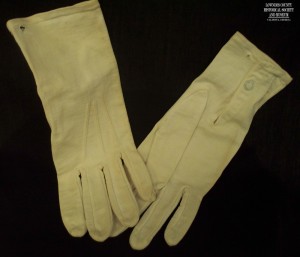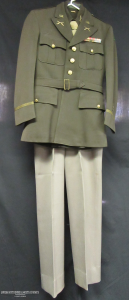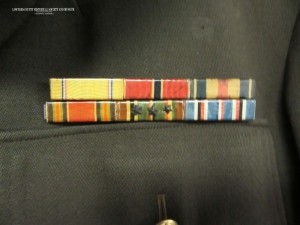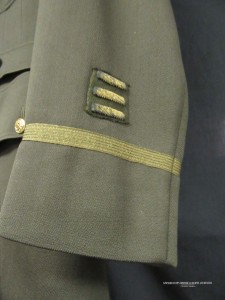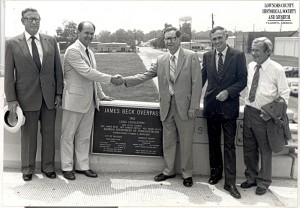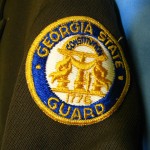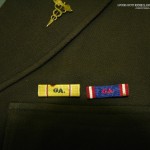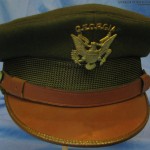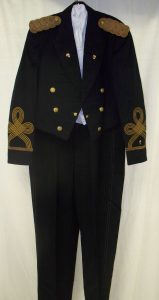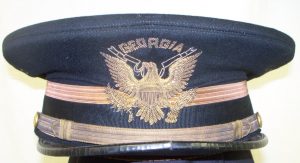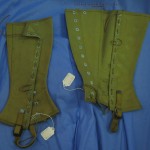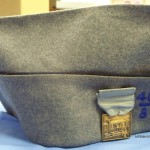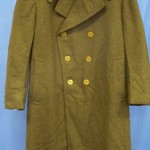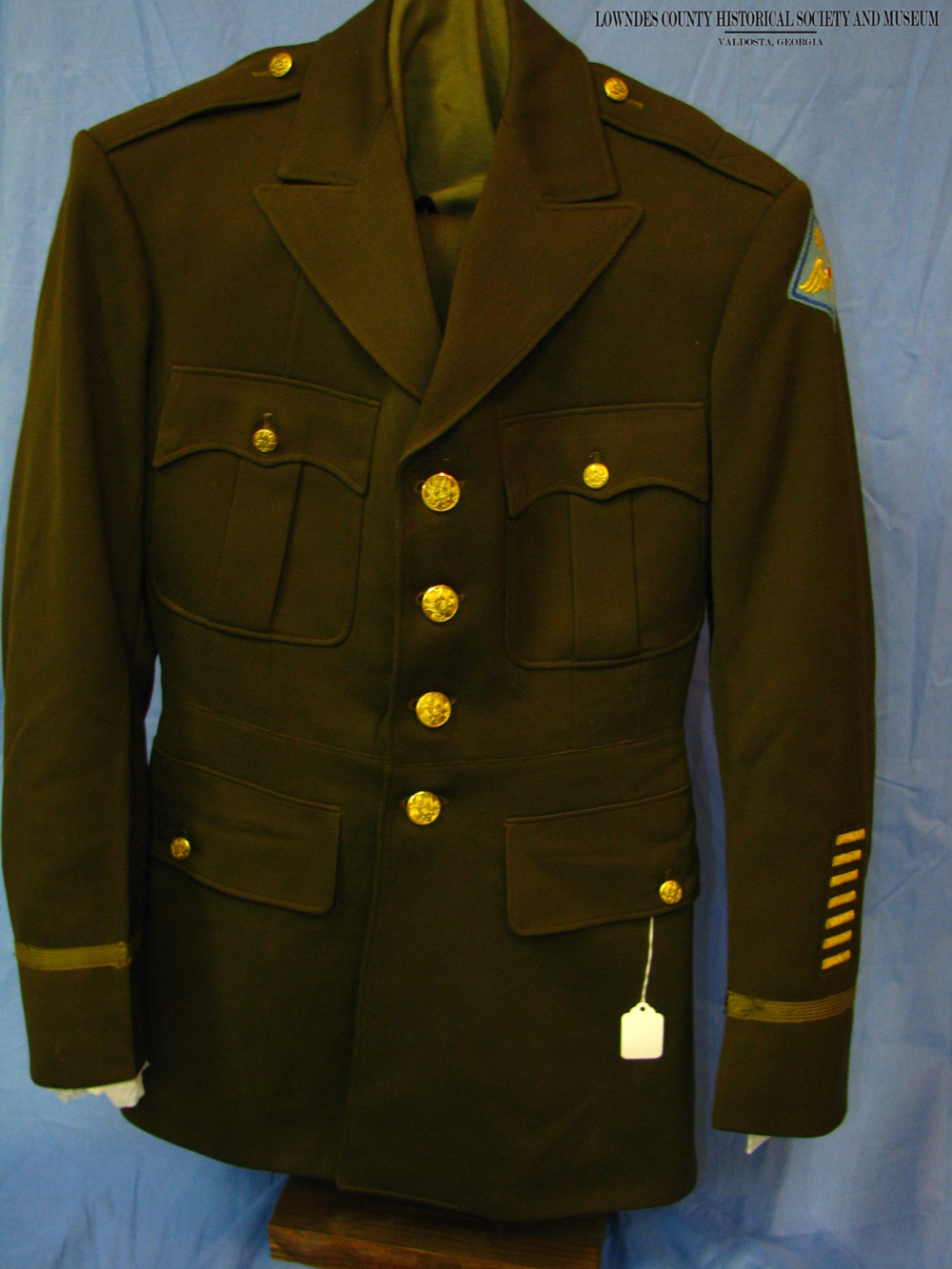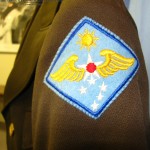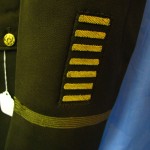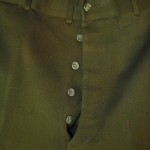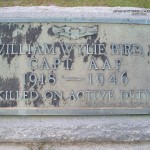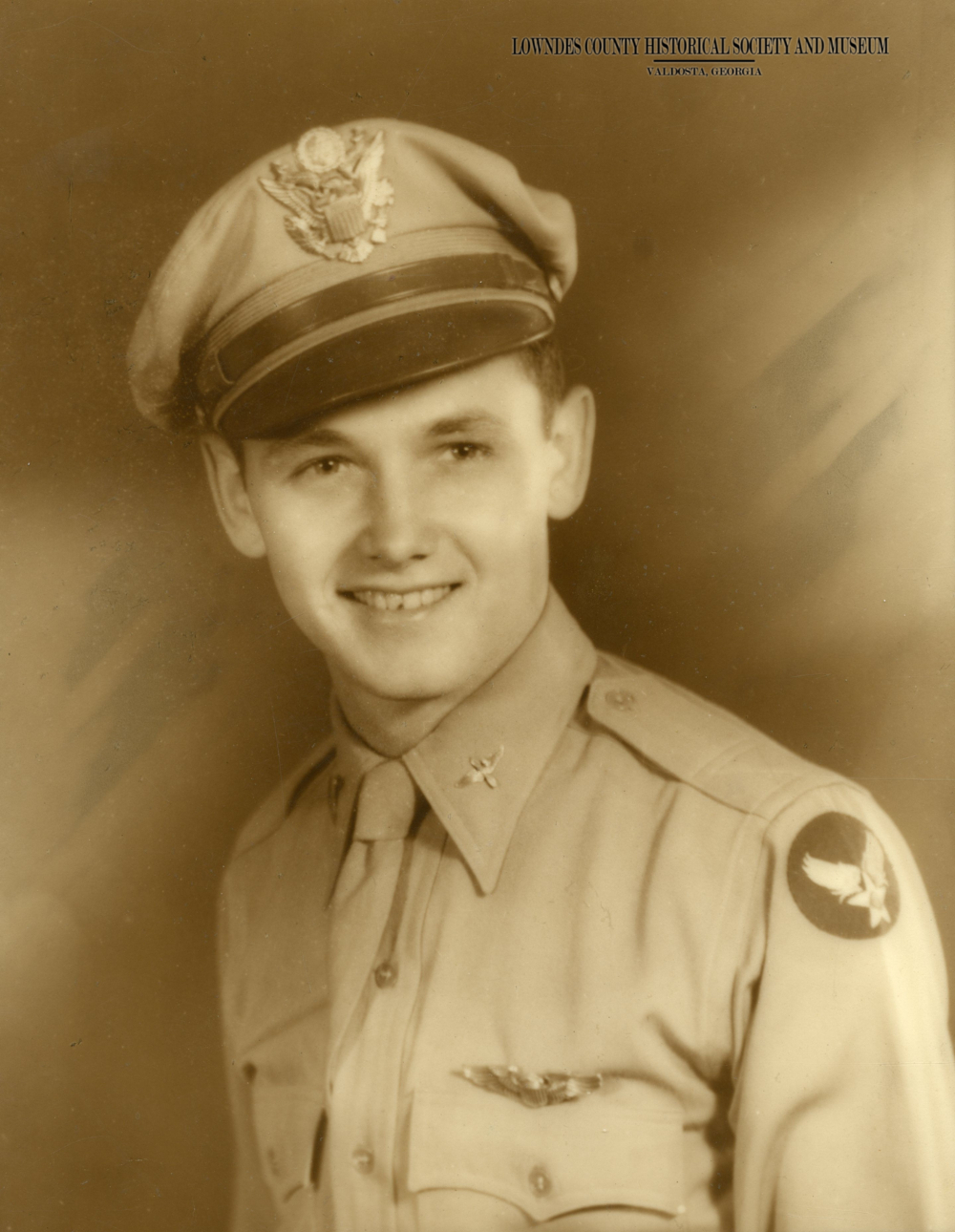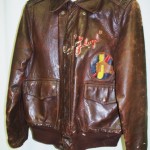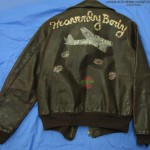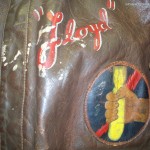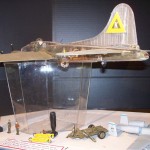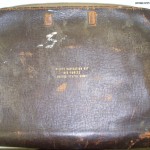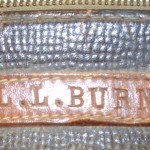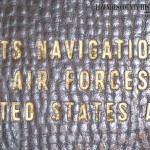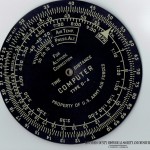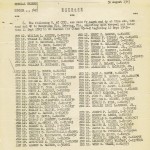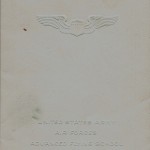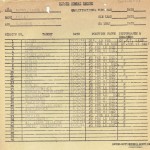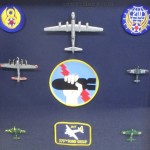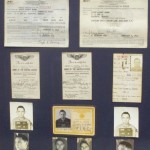Battell Collection 2003-032 TB126R9Sc1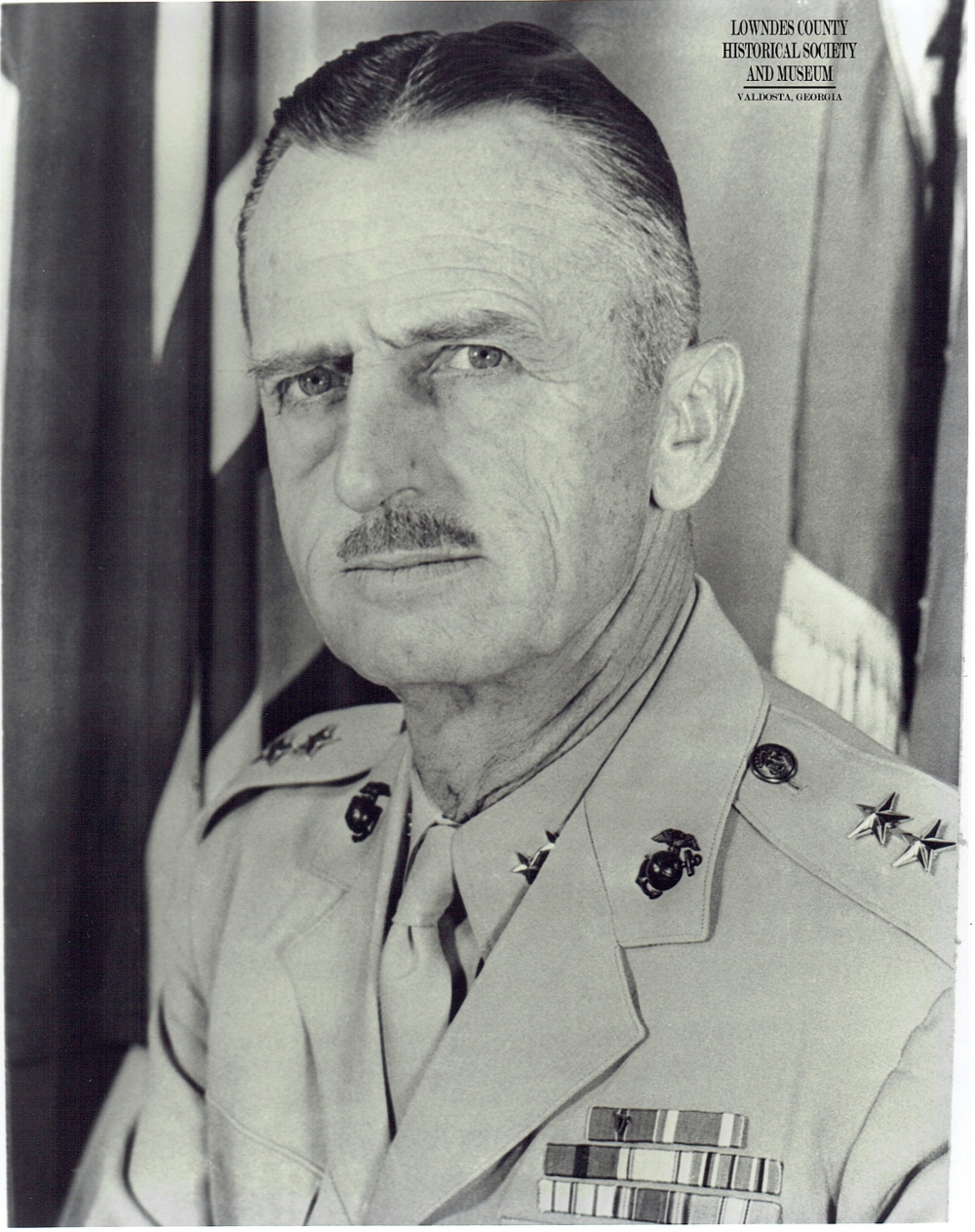
William Putman Battell (1906-1980) enlisted in the Marines in 1927. After completing training he first served as an instructor for the Naval Radio in Anacostia, DC. and was selected for Officer Candidate School in 1929. Battell was commissioned as a Second Lieutenant January 31, 1930 in Quantico, VA. He was sent to Peiping, China in 1932 for six months and in 1933 he was stationed on the USS Saratoga for a one year overseas tour. In 1935, he was promoted to First Lieutenant and served as a Army Signal School Instructor in Fort Monmouth, New Jersey. He was promoted to captain and was stationed first aboard the USS Arkansas and then the USS New York as a Detachment Commanding Officer in 1937. In 1939-41, he served as a the head of Marine Corps and Maintenance Group Installation. He received a letter of commendation and was promoted to Major in January 1942 and then to Lieutenant Colonial August 1942. In 1944, he was assigned to the Fleet Marine Force Pacific Signal Supply Officer Service Command. During this time he received a bronze star with a Combat V. In 1948, he was promoted in Colonel. After completing Naval War College in 1952, he served as a Supply Officer and in 1955 he was Commanding Officer of the 3rd Service Regiment in Japan. He received promotions in 1957 and in 1962 as Brigadier General and then Major General. He was assigned Director of Material Division in the Supply Department. In 1958, he moved to Albany, Georgia to assume position as Commanding General of the Marine Supply Corps and in 1962 became the Assistant Quartermaster General. He retired in 1965.
Albert Pendleton, past president of the Lowndes County Historical Society, wrote about William Putman Battell and his uniform donated by his wife, Jean Finklea Battell, in the August-September 1983 issue of the Lowndes County Historical Newsletter Vol XII Nos. 10-11 p. 3. More details of his career in the Marines are available in the museum.
William Putman Battell is buried in Ruskin Memorial in Hillsborough County, FL. The textile collection includes his uniform jacket with collar pins and pants, white and green hats with marine pins, gloves, suspenders, ribbon rack and framed medals, collar, belt, plaque, photo, and biographical information.
Beck, James 2016-20 TB 5R10Sb2
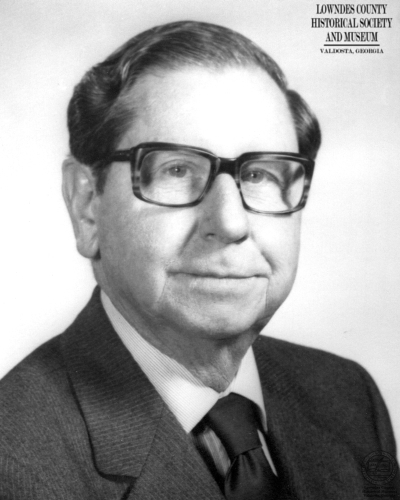 James McEntire Beck (May 5, 1917-May 7, 2011) was born in Eton, Georgia and moved to Valdosta, Georgia in 1922 with his parents. He graduated from Valdosta High School in 1934. His military service entry as a Private began February 1941, he was commissioned as an officer (2nd Lieutenant) September 1, 1942 after graduating from Officer Candidate School.
James McEntire Beck (May 5, 1917-May 7, 2011) was born in Eton, Georgia and moved to Valdosta, Georgia in 1922 with his parents. He graduated from Valdosta High School in 1934. His military service entry as a Private began February 1941, he was commissioned as an officer (2nd Lieutenant) September 1, 1942 after graduating from Officer Candidate School.
As a Battalion Operations Officer of the 2nd Battalion, 362nd Infantry Regiment, 91st Division, he was engaged in 18 months of combat in North Africa and Italy. He was awarded the Bronze Star for Heroic Achievement and the Silver Star of Gallantry in Action. In writing home about the Silver Star, he expressed sentiments so many others receiving such an honor have versed:
“Frankly I haven’t done anything others wouldn’t do under the same circumstances.” Major James Beck was honorably discharged from duty January 1946. His awards include the Silver Star, Bronze Star Medal and Oak Leaf Cluster Bronze, American Defense Service, European-African-Middle Eastern Campaign and Bronze Star Attachment, WWII Victory, Combat Infantryman Badge 1st Award, and Honorable Service.
Returning home to Valdosta, he married Betty Mathis. Beck continued to work for his community serving on the Board of Directors of First Savings & Loan in Valdosta, Advisory Board of Citizens & Southern National Bank, Member of the Valdosta Chamber of Commerce, Member of the Lowndes County Planning Commission, Member of the Hospital Authority, and Member of the South Georgia Medial Center Foundation. He was elected Mayor of Valdosta three terms and was a Georgia House of Representative for Valdosta and Hahira, serving on the House Appropriations, the University System of Georgia and Banks and Banking Committees. In addition, he is known locally for his work to raise funding for the YMCA facility in Valdosta, as well as his work in the building of the James Beck Overpass, and his influence in the continuance of the Valdosta Airport.
The Beck textiles includes a uniform jacket with belt and pants, shirt, two ties, his ribbon rack and collar pins.
- American Defense, Bronze Star, Silver Star, WWII Victory, European-African- Middle Eastern Campaign metal with Triple Battle Bronze Stars, American Campaign
Bird Collection 2007-53 TB 88R11Sd3, 89R11Sd2, 90R9Se2, THB31R8Sd/4 Dr. Frank Bird Sr. served as a physician during WWI and this information is recorded in our WWI Textile Collection at http://valdostamuseum.com/collections/textiles/military/wwi/.
On this WWII page, we continue his record of military service as a Lieutenant Colonel
with the Georgia State Guard in 1946. Along with two sets of uniforms, the museum also archives a certificate verifying his rank and his membership card which when receiving the uniform was still contained in the front lower pocket of the jacket shown here.
- Leg shields protect infantry soldiers from low bushes and brambles.
- This is an American Legion garrison hat with ribbon.
William Wylie “Billy” Bird II, (1918-1946), son of Frank Bird, was born in Valdosta. He attended West Point and enlisted before the outbreak of the war, later volunteering with the Air Corps, he received his wings at Gunter Field, Alabama in 1941. He was ordered to Manila and arrived two weeks before the attack on Pearl Harbor. When planes failed to arrive for his squadron due to a Japanese blockade, he joined the infantry in the American stand at Bataan where he was captured April 9, 1942 and was in Japanese prison camps for over 3 and one-half years. He was released September 8, 1945 in fair condition. After a leave, he returned to active duty with the Army Air Corps. Tragically, on July 29th, 1946 Capt. Billy Bird was killed in a B-25 bomber crash during a thunderstorm in Mississippi. Captain William Bird is buried in Sunset Hill Cemetery.
- Billy Bird’s Far East Air Force sleeve insignia
- Billy Bird’s uniform jacket detail showing oversees service bars. One bar was given for each six months served overseas. This jacket shows 3 1/2 years oversees.
- Billy Bird’s uniform pants showing the button fly typical of early issue WWII uniforms.
- William Wylie “Billy” Bird’s tombstone is located in Sunset Hill Cemetery in Valdosta, GA.
Though the museum does not house the uniforms of the other two sons of Frank Bird who also served during WWII, they are mentioned briefly here. Cornelius Ashley Bird (1917-1999), the oldest son of Dr. Frank and Laura Ashley Bird, was born January 25, 1917 in Valdosta, Georgia. He became a physician and practiced with his father in Valdosta until he volunteered for the Army Medical Corp in WWII. While stationed in Okinawa, Hawaii, he met his wife Ester Abrahamson, an Army Medical Nurse. He was promoted from Captain to Major. After the war, Cornelius became a neurosurgeon and lived near Jacksonville, Fl. He died in 1999 and is buried in Oaklawn Cemetery in Jacksonville, Florida.
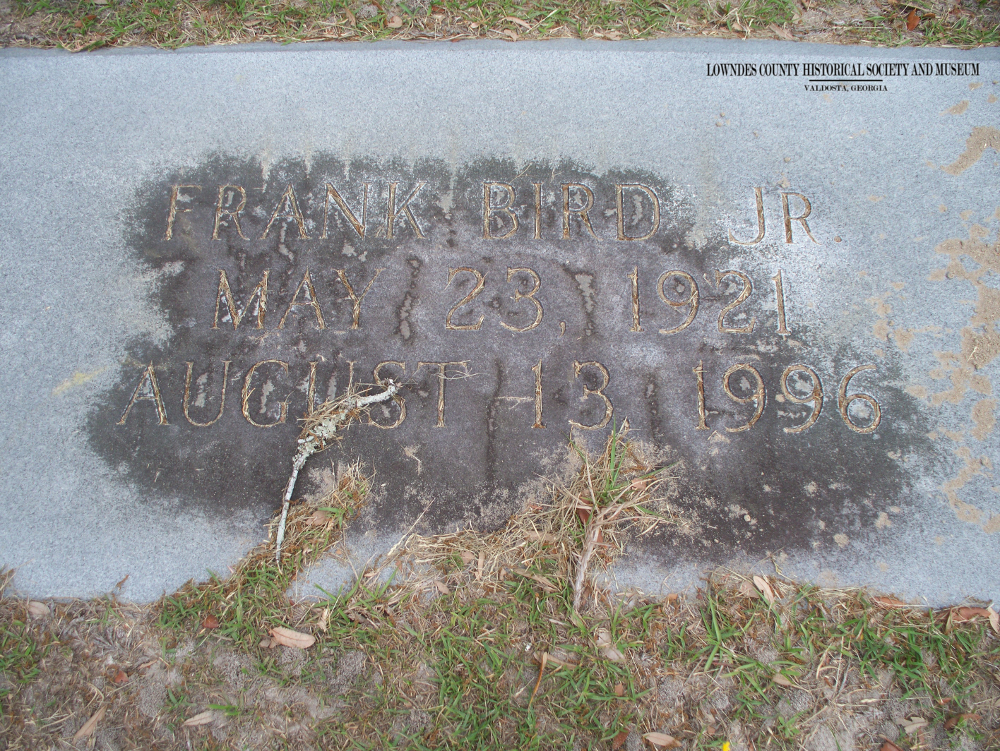
Frank Bird Jr. was in the 19th Infantry Regiment, 24th Division, and also served in the South Pacific. He is buried in Sunset Hill Cemetery.
Frank Bird Jr, the youngest of four children, was born May 23, 1921 and joined the army during WWII. He served in the Pacific Theatre with the 19th Infantry Regiment and the 24th Infantry Division as an officer. Lt. Frank Bird was badly wounded by Japanese machine gun fire at Lyte but survived the wounds. He married Helen Rutledge Bird. He died in 1996 and is buried in Sunset Hill Cemetery in Valdosta, Georgia.
Photographs of the Bird brothers and Cornelius’s wife are on our WWII Calendar Book II on page 4.Within this extensive collection, numerous other uniform items and paper artifacts document the Bird family involvement with the Georgia National Guard, Georgia State Guard, and the American Legion.
2007-053-04THB 31R8Sd/4 Bird Collection Helmet
There is evidence that someone in this family also trained to serve during the Vietnam Era. Within the Bird Collection is a plastic black helmet liner from the year 1967. For more details see Vietnam Era within our Military Textile Web site at https://valdostamuseum.com/collections/textiles/military/korea-and-vietnam-eras/
.
Burns Collection 1992-02 TB36R10Sa1
Lloyd Burns (1925-2010) was born March 20,1925, in Atlanta, GA. but lived in Valdosta where his father practiced medicine. He attended Valdosta High School and played on the 1941 Georgia State Championship football team. Using a false date on his birth certificate with the assistance of his father, he entered the U.S. Air Force Aviation Cadet Program while still in high school. In June of 1942, he graduated from high school and briefly attended the initial co-ed classes at Georgia State Women’s College (now Valdosta State University). However, his education was interrupted in November when he was called to active duty. For his first flying school he was stationed in Arcadia, Florida, Southeast Training and Command. From there he was sent to Moody Air Force Base in Valdosta, Georgia, where he earned his wings on August 28,1943. He was sent for further training throughout the US. While stationed in Kimbolton, England in the European Theater, he flew 30 bombing missions against Nazi targets in a B-17 Flying Fortress with the 8th Air Force, 379th Bomb Group, 525th Squadron, most times under heavy fire. Upon completing his second mission on June 6,1944, over Normandy, his plane collided with one of its fighter escorts and went down in the Thames. Burns was rescued; however, the co-pilot, navigator and tail-gunner lost their lives. Upon completing 30 combat missions, Lloyd Burns was sent home for two weeks R and R aboard the sister ship to the S.S. Stockholm. On this cruise, the fleet was stalked by “wolf packs” of German submarines and one ship in their convoy was lost; however, he arrived safely stateside. Returning to active duty, he was slated for flight instructor training; however, he applied for and received training to fly the B-29 Super Fortress, “The Heavenly Body II”. As Airplane Commander in the 20th Air Force, Very Heavy Bombing Group 426, “The Hellbirds,” he flew five bombing raids over Japan in the Pacific Theater. Unknown to him at the time, the last of these missions he flew was a decoy for the first atomic bomb. He was honorably discharged.
Lloyd Burns was awarded several U.S. military medals including the following: Distinguished Flying Cross, Air Medal with 4 Oak Clusters, Unit Citation with 2 Bronze Stars and European and Pacific Theater Ribbons.
After the war, Lloyd Burns continued his education and became a physician specializing in Obstetrics and Gynecology. He practiced in Valdosta from 1956-1985 and later lived in California, Florida, and Peachtree, Georgia where he died in 2010.
Lt. Lloyd Burns’ flight jacket and models of the airplanes he flew remain on permanent display. In order to preserve and protect the paper documents, they are available for viewing upon appointment. His textile collection includes his leather flight jacket and leather brief case.

